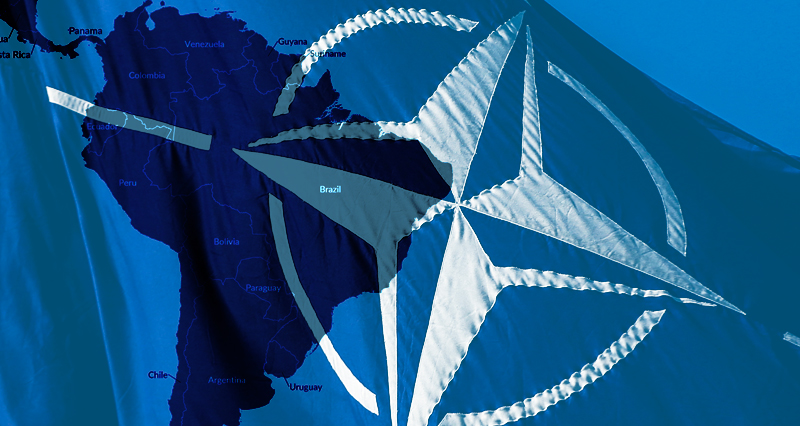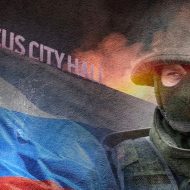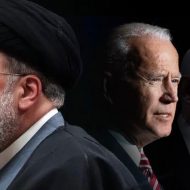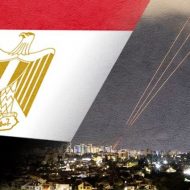Colombia
As a “global partner” of NATO, Colombia enjoys privileged attention from the warmongering alliance. As an expression of this, in recent times, the United States is making great efforts to install a naval base on Gorgona Island in the Colombian Pacific, despite the great rejection of scientists and civil organizations in the region that intend to safeguard a set of rights that would be violated. These organizations consider that the US body that finances the works of the base (International Office for Anti-Narcotics Affairs and the United States Attorney General) generates a loss of sovereignty since it would place the island under the power of another state.
According to the State Department, the Biden administration also contemplates the purchase of boat engines for an amount of 2.6 million dollars to improve the operational capacity of the Coast Guard on the island.
Piedad Córdoba, a senator for the ruling Historical Pact, spoke out at the beginning of December against any interference by the United States in Colombia through the installation of military bases or through the deployment of its armed forces, and has asked President Petro to cancel the work. Córdoba has stated that it would be strange for the United States to pay so much attention to a work like this, if it is not understood that for Washington the Pacific Basin region has a strategic nature. This is “expressed through the deployment of the Fourth Fleet and the Southern Command with the installation of military bases, among them, the one on Gorgona Island”.
Likewise, the senator was of the opinion that the completion of the works in Gorgona, which in fact would mean the installation of the ninth United States military base in Colombia, could cause damage similar to that which occurred in the Philippines, Panama and Puerto Rico, where Washington has set up military bases.
Also in Colombia, at the beginning of December the president invited the armed forces of the United States and NATO to the Amazon to cooperate in safeguarding the territory and combating drug trafficking. It was argued that the machinery, equipment and personnel introduced to carry out the work could be reused as “police to protect” the environment, changing the traditional logic of the fight against drugs. To do this, he proposed the use of US Black Hawk helicopters to put out fires, arguing that such action would symbolize a “complete change in what US military aid has always been.”
In this framework, already during the government of Gustavo Petro, at the end of August of last year, the armed forces of the United States and Colombia carried out joint exercises within the framework of NATO. In this context, Petro received General Richardson who made a five-day visit to the country. Richardson was full of praise for “our number one security partner in the region,” describing Colombia as the “lynchpin of the entire southern hemisphere”, which she said was “free and secure thanks to Colombia’s stabilizing efforts.”
In this regard, Petro stated -it is not known if with feigned innocence or ignorance- that he had “achieved some things: the conversation with NATO – of which we are members, I don’t know, a very rare status there, but we are involved there, I think it is the only Latin American country in that – which is to take this alliance to care for the Amazon rainforest, providing technological collaboration in this”.
The fight for the defense of the Amazon as a subject of military intervention
The idea of using the fight for the environment as an instrument of intervention is quite old. Already in 1989, Al Gore sentenced: “The Amazon is not your property. It belongs to all of us.” In this vein, in 2019, in the midst of the fires in the Amazon, French President Emmanuel Macron urged the G7 countries to intervene: “It is an international crisis,” he said, which was echoed even by the Secretary General of the UN, Antonio Guterres, recalling his time as leader of a NATO member country. The question-and-answer social network Quora rhetorically asked: “Why doesn’t NATO invade Brazil to save the Amazon?”
But President Petro is not so naive as to assume that the US and NATO mean well in the Amazon. He has publicly criticized the drug war policy of the United States, pointing out its obligations as the world’s largest consumer. Petro affirmed: “What I am trying to do is take the dialogue with the United States to a different axis, which is the issue of the climate crisis and hence the importance of the Amazon jungle. With the United States we have managed to create the first military unit with Black Hawk helicopters ”
Richardson’s visit to Colombia was part of a tour he made to several countries in the region with the express purpose of counteracting the influence of China and Russia, and promoting the isolation of Nicaragua, Cuba and Venezuela.
In November Petro informed that French President Emmanuel Macron offered him “help” to preserve the Amazon. It must be remembered that France has an overseas department in French Guiana, on the border with Brazil and just 500 kilometers from the mouth of the Amazon River. The spacecraft launch base used by the country and Europe is located in that territory. Without knowing the content of the offer or the compensation that Colombia should grant, the agreement between the two countries places France in a position of influence at both ends of the strategic basin.
Ecuador
Last December, the United States approved a law aimed at strengthening cooperation with Ecuador in defense matters. That law, called the Ecuador-United States Association Law 2022, is part of the National Defense Expenditure Authorization Law of the United States and is subsequent to the also recently approved agreement on open skies, with a view to reducing tariffs, increasing travel and businesses and stimulate the creation of jobs related to air bridges between the two countries.
All this is presented as a strategy to promote trade, but the resources committed by the United States (858,000 million dollars) will be under the jurisdiction of the Department of Defense, which clearly displays its orientation.
Before that, in September, General Richardson also visited Ecuador and convened with President Lasso. She led during those days, the South American Defense Conference, Southdec 2022, for two days, in order to coordinate “mechanisms for the fight against organized crime and drug trafficking”.
Uruguay
On February 3, the prominent Uruguayan political analyst Julián González Guyer published an article in the Montevideo magazine Brecha. He reported that the ship US Coast guard Cutter (USCGC) Stone, the most modern of the United States Coast Guard, would enter the port of Montevideo for 10 days. According to the columnist, the US ship would remain in Uruguayan waters for about ten days under the argument of “carrying out training exercises in search and rescue operations at sea and control of jurisdictional waters with the National Navy.” But in reality the objectives of the USCGC Stone are different. Precisely, its goal is “to obtain information about the South Atlantic and, in particular, the activity of Chinese fishing vessels in the area”.
This is the second trip of the ship to Uruguay, after the first, carried out two years earlier to carry out activities of “patrol and support for illegal fishing interdiction activities in the waters of Guyana, Brazil and Uruguay” although the scheduled visit to Argentina was canceled.
On this occasion, as on the previous one, the public explanation about the objectives of the visit has been surrounded by contradictions between what the national government and the United States embassy in Montevideo have reported.
González Guyer concludes by pointing out that while the learning that the Uruguayan Navy could have obtained is negligible, the US ship would collect “a significant volume of information on our coasts, jurisdictional waters and adjacent areas. Also, about our Navy and its officers”.
Several decades ago, the Uruguayan Navy was trained by the United States to act as a force dedicated to “protecting” the entrance to the Río de la Plata, giving the US Navy privileged space in this regard. Stone’s two visits to Uruguay in such a short space of time can be inscribed in this logic.
But along with this, the Stone carried out patrol missions in the South Atlantic, along with three other ships, effectively establishing greater control over a strategic triangle in the South Atlantic and the Strait of Magellan between Montevideo, Malvinas and the 3rd. Naval Zone of the Chilean Navy based in Punta Arenas.
TO BE CONTINUED…









Leave a Reply